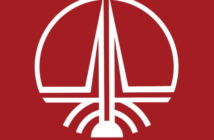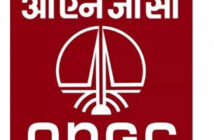Guest Article by Sanjay Gora, AGM, SAIL and Gold Medalist in Journalism,. Authored a book “Know yourself for better work life balance.” Co-authored two other books. Views expressed are personal and non specific to any particular organisation. (Views expressed are personal)
“We Indians have taken knowledge directly from Lord Krishna. We know all there is to know. So why should we seek knowledge elsewhere.” This was a remark made by a poet in jest, but we seem to have taken it seriously. The article attempts to adopt a contraction approach and describes the best practices of Public Sector Enterprises/Undertakings or State Owned Enterprises as well as Private Sector Enterprises at international level, which former can adopt for better outcomes.
What are best practices? Here is one possible definition.
“A best practice is defined as the way an Enterprise creates a process which leverages skills and resources with appropriate procedures and control to command leadership in a given Marketplace.” -Ann Marie C.
Let us now move to certain specific areas and the best international practices. These have been culled out from different reports and articles available on the web. The source has been cited alongside the quoted material.
CORPORATE GOVERNANCE
N.Balasubramanian in his book ‘Leading from the Top’ shares some of these best practices adopted by State Owned Enterprises (SOEs) in different countries.
In Italy, minority shareholders of listed SOEs have special rights through the election system of the Board, a cumulative voting type mechanism assigns disproportional voting rights in favour of the minority shareholders. The country mandates that listed SOEs do not provide any information to the ownership entity that it does not also give their minority shareholders so as to comply with the requirement of equitable treatment of all shareholders. In Norway, minority shareholders are represented in the committee nominating directors on the board. In Sweden, for listed companies a nomination committee of 4 or 5 largest shareholders discusses board nominations and remuneration. In the Slovak Republic, in state majority owned SOEs, minority shareholders are given majority representation on their boards.
TALENT MANAGEMENT
Patrick Devlin writes that in the area of integrated talent management, three private sector practices can be adopted by PSUs, even within the constraints of public sector management. These areas allow for some creativity and safely challenge conventional ways of doing the business of the government. These are knowing your people, looking at the work not the job and planning for what is next.
He elaborates that private sector keeps a better record of skills and capabilities of its employees. They are more often put in cross functional teams based on their skill sets. While recruiting, private sector firms are more flexible and focussed on work required than filling a vacancy for a particular post or title. Redefining roles and responsibilities and change of title is common in private sector. Then private sector is more proactive as far as succession planning, strategy planning and developmental training are concerned.
In a similar vein, Patrick Mallory outlines lessons from private sector for PSUs on customer service and data analytics.
CUSTOMER SERVICE
Government agencies with common missions, customer interactions and services can work together to put in place systems to assist customers on a 24×7 basis. The trained representatives can help customers via realtime two way communication using tele and social media. Citizens will feel more connected to the government services and the PSUs can collect feedback on their systems and services.
DATA ANALYTICS
Mallory says that investing in training and tools to empower employees to easily see and analyse data allows organizations to find insights into their own work, find new opportunities and refine programs. Data analysis should be encouraged in measuring results, budgeting, status reporting and project scoping. Data analysis should this be an integral part of PSU culture.
A Mckinsey Report recommends adoption of government by design as core philosophy for improving public sector performance. Four principles are at its core: the use of better evidence for decision making, greater engagement and empowerment of citizens, thoughtful investments in expertise and skill building, and closer collaboration with the private and social sectors.
DECISION MAKING
The report highlights three forms of evidence-based decision making viz. collecting credible performance data, benchmarking consistently against peers and using data to design and improve interventions. This is a corollary to the point on data analytics made earlier. The goal can be to improve ease of doing business with public sector, better customer service, increasing profitability etc. Digital India drive by Government of India is one example of sharing information through digital media to allow monitoring by the beneficiaries.
ENGAGEMENT & EMPOWERMENT OF STAKEHOLDERS
Apps like BHIM, URJA are examples of active engagement and empowerment of stakeholders. After recent shift to daily change in petrol prices, PSUs have come out with apps to check the price for the day. MyGov and Public Grievances portal of Government of India are few examples of active engagement with citizens. The report states that, “Because people can do their banking and shopping online, for example, they expect to be able to apply for driver’s licenses and submit tax returns online as well. Governments are investing to meet these expectations. The Estonian government’s e-services portal, visited by more than 10,000 users every day, allows residents to perform an ever-expanding array of tasks including applying for unemployment benefits, paying taxes, registering new companies, and even voting.7 But being citizen-centric isn’t just about the Internet: Australia, for instance, has pioneered mobile government offices—satellite-equipped trucks—that serve as a one-stop-shop for government services for people living in remote areas.”
The 2013 report highlights how governments are soliciting citizen input to improve public services. It elaborates, “Regulations.gov, one of the US government’s earliest e-government programs, allows citizens to search, view, and comment on federal regulations. Users post more than 27,000 comments on the site every month….Iceland in 2010 chose 950 citizens at random to participate in the drafting of a new constitution, a significant example of “deliberative democracy” at work. And the city of Cologne, Germany, has used participatory budgeting: residents helped decide how to allocate a portion of the municipal budget.” Citizens can be involved in monitoring and keeping check on service standards or facilities and provide feedback for timely remedial action.
INVESTMENTS IN EXPERTISE AND SKILL BUILDING
Present government has created a Ministry of Skill Development, which in coordination with Ministries and different PSUs is working on several fronts to build skill inventory, skill gap data and skill development facilities and programmes. The report cited above suggests three major tools for accomplishing the objective. These are using adult-learning practices to build core capabilities, developing specialised capabilities in critical sectors and sharpening strategic and risk-management skills.
COLLABORATION FOR BETTER RESULTS
Public Sector can use tools like crowd-sourcing, pooling of resources and joint procurement to get better results. For example, PSUs under a single Ministry can share their common requirements and vendor database. They can even combine their procurement and save in terms of volume procurement. The Mckinsey Report explains how US chief technology officer, has hosted events at which innovators and entrepreneurs build cost-saving apps using the more than 350 government data sets from 12 US health agencies, available on Data.gov. Similarly, opening up education data sets in several countries has spurred the creation of start-ups that use the data to improve teacher quality, reduce infrastructure costs, optimize school locations, and in general help educators do more with less.
The Report outlines how PSUs can work with other stakeholders for better outcomes. It exemplifies, “One integrator model is being tried in Brazil’s oil and gas industry. Prominp—a coalition of government agencies, private companies, trade associations, and labor unions—develops a rolling five-year projection of how much manpower is needed in specific geographies and skill areas (for example, shipyard welding or petroleum engineering), then identifies the best training provider to codevelop a curriculum with selected companies to meet those exact needs. By the end of 2012, Prominp had already qualified 90,000 trainees, and its goal is to bridge the projected skill gap of more than 200,000 skilled people by 2014. The convergence of the public, private, and social sectors means that government leaders will increasingly need to be “tri-sector athletes,” adept in operating at the intersections of these sectors. And they will need to embrace new forms of organization and service delivery that are rooted in partnership.”
CLOUD TECHNOLOGY ADOPTION
Cloud technology is becoming increasingly popular among start-up companies. It is high time public sector starts utilizing and leveraging the advantages of this technology. Redhat, a leading provider of open source software solutions recommends eight best practices in cloud technology which public sector can adopt. These are
1-Focus on reducing total cost of ownership.
2-Emphasize agility over perfection
3-Embed security in your cloud planning from the beginning
4-Migrate applications in stages
5-Employe automation and standardization
6-Avoid Vendor lock-in
7-Collectively determine IT chargeback policies
8-Promote innovation with open source technologies
SUPPLY CHAIN MANAGEMENT
Gary A. Smith, in an article, elaborates how supply chain managers who work in the public sector face an extra challenge that most of their private sector peers do not: the need to comply with transparency and procurement rules that are typical of federal, state, and municipal agencies. Despite those constraints, public sector managers can still achieve savings ranging from 5 percent to 25 percent per commodity. To do that, they must integrate the public sector requirements with such private sector concepts as strategic sourcing, supplier relationship management, and inventory management.
One can keep on adding to the list. The point is to accept the constraints of public sector, which are there for a reason. And then learning from the examples of successfully overcoming these constraints and getting better outcomes and results.
Neither criticising the PSUs for being inefficient, lethargic and monolithic is justified, nor seeking to cover inefficiencies in the name of additional responsibilities and challenges that PSUs have to take up. There is always a better way and that is to emulate the best performers and aiming for excellence. And as Michelangelo said, “The greatest danger for most of us is not that our aim is too high and we miss it but that it is too low and we reach it.”
This article is part of GDP Magazine’s 2nd Annual PSU Handbook 2017
Catch your Copy on Stands or Contact at 9871235450 or gdpindia.net@gmail.com





